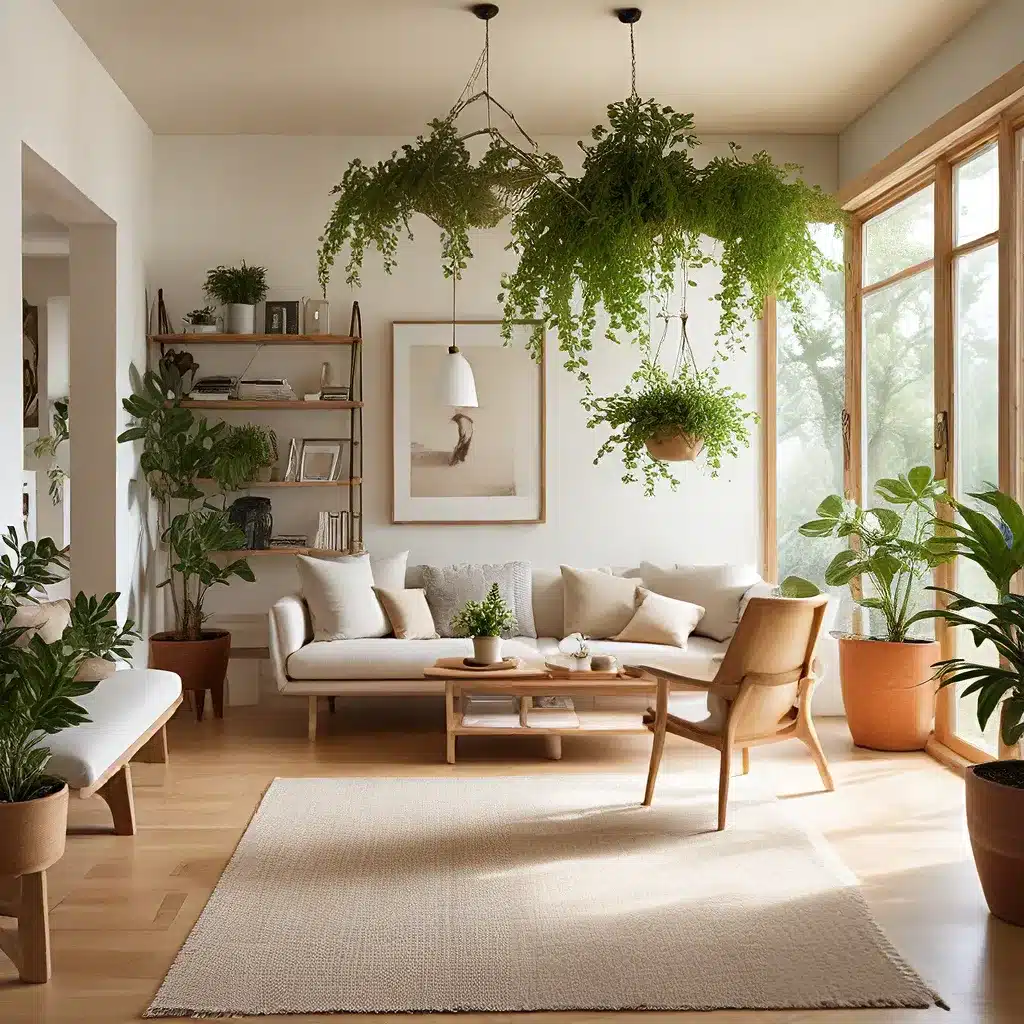
In the ever-evolving world of interior design, the focus has shifted towards creating spaces that not only look aesthetically pleasing but also reflect a deeper awareness of our impact on the environment. Sustainable design has emerged as a crucial consideration for homeowners and design professionals alike, as the demand for eco-friendly, energy-efficient, and socially conscious living spaces continues to grow.
Embracing Sustainability: The Foundation of Mindful Design
Sustainable design is more than just a trend; it is a philosophy that aims to create living environments that are in harmony with the natural world. By incorporating sustainable practices, designers can craft spaces that reduce resource consumption, minimize waste, and promote a healthier, more mindful lifestyle for their clients.
One of the key principles of sustainable design is the use of environmentally-friendly materials. This includes sourcing locally-produced, renewable, or recycled materials that have a low carbon footprint. For example, bamboo, a fast-growing and durable material, has become increasingly popular for flooring, cabinetry, and furniture. Similarly, reclaimed wood and natural stone offer unique textures and character while reducing the demand for new resource extraction.
Embracing Biophilic Design: Bringing Nature Indoors
Another essential aspect of sustainable design is the concept of biophilic design, which aims to reconnect people with the natural world by integrating natural elements into the built environment. This can be achieved through the strategic placement of indoor plants, the inclusion of natural lighting, and the incorporation of natural materials and textures.
Urban Grace Interiors Inc., a leading interior design firm, has embraced the principles of biophilic design in their projects. By carefully selecting lush greenery, natural stone accents, and large windows that let in abundant sunlight, they create spaces that feel soothing, rejuvenating, and in harmony with the natural world.
Crafting Functional and Flexible Spaces
Sustainable design is not just about the materials used; it also encompasses the efficient use of space and the creation of versatile, multi-functional environments. Space planning plays a crucial role in this approach, as designers strive to maximize the functionality of each square foot while minimizing waste and unnecessary consumption.
One innovative strategy is the incorporation of modular furniture and built-in storage solutions. These design elements not only optimize the use of space but also allow homeowners to adapt their living environments to their changing needs over time. By investing in durable, adaptable furnishings, homeowners can reduce the frequency of replacing items, thereby minimizing their environmental impact.
Embracing Minimalism and Decluttering
In addition to space planning, the minimalist design approach has gained popularity as a means of achieving sustainable living. By paring down possessions and focusing on essential, high-quality items, homeowners can create a more serene and organized living environment. This not only reduces the need for excessive storage space but also encourages a more mindful and intentional lifestyle.
| Design Style | Sustainable Characteristics |
|---|---|
| Minimalist | Emphasizes simplicity, functionality, and decluttering; reduces resource consumption and waste. |
| Biophilic | Integrates natural elements, materials, and greenery; promotes a connection with the natural world. |
| Modular | Utilizes flexible, adaptable furniture and storage solutions; allows for changes in lifestyle and needs. |
Crafting Luxury with Sustainability in Mind
Sustainable design does not have to compromise on luxury or aesthetics. In fact, many high-end interior designers have embraced the principles of sustainable design to create stunning, personalized living spaces that cater to the needs and preferences of their discerning clients.
One such example is the work of Dorian Bahr, a renowned designer who has made a name for himself by seamlessly integrating sustainable materials and cutting-edge technology into his luxury projects. By leveraging his expertise in universal design and space planning, Bahr creates environments that are not only visually striking but also highly functional and adaptable to the changing needs of his clients.
The Role of the Interior Designer in Sustainable Living
The importance of working with a professional interior designer cannot be overstated when it comes to achieving sustainable living. These design experts possess the knowledge, resources, and creativity to transform a space into a personalized, eco-friendly haven that reflects the unique needs and preferences of their clients.
By collaborating with an interior designer, homeowners can explore a wide range of sustainable design strategies, from the selection of energy-efficient appliances and smart home technologies to the incorporation of renewable materials and biophilic elements. The result is a living space that not only looks stunning but also aligns with the homeowner’s values and commitment to environmental responsibility.
Conclusion: Embracing the Future of Sustainable Design
As the demand for conscious, sustainable living continues to grow, the importance of mindful design practices cannot be overstated. By embracing sustainable design techniques, homeowners and design professionals alike can create living environments that are not only visually appealing but also in harmony with the natural world, promoting a healthier, more intentional lifestyle.
Whether it’s through the use of eco-friendly materials, the integration of biophilic elements, or the implementation of flexible, multifunctional spaces, sustainable design offers a holistic approach to crafting conscious, personalized living environments that support the well-being of both the occupants and the planet. As we move forward, the integration of sustainable design principles will undoubtedly become an integral part of the future of interior design and home decor.

